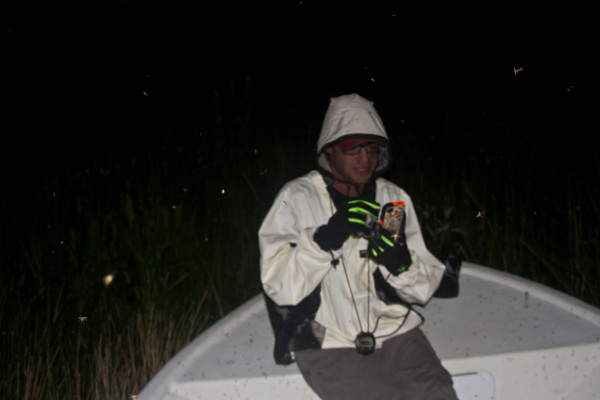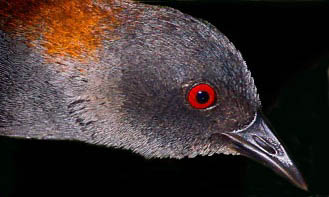Red Skies at Morning, Black Rail Warning
CCB completes successful season of Red Knot resighting in Georgia
July 1, 2015
2015 Tidewater Bald Eagle Breeding Season
July 5, 2015
Like the old sailor’s adage, surveys conducted by The Center for Conservation Biology are providing an ominous forecast on the status of black rails within the mid-Atlantic region. Black rails are declining rapidly and are on a crash course for extirpation from the mid-Atlantic region in our lifetime. Biologists at CCB have been conducting a multi-year effort to document the distribution of the black rail throughout this region and recently completed the 2nd year of a 2-year study to determine the status of black rail in North Carolina. It is our hope that locating populations of this species will allow for their protection and management and will help to ensure their future.

An ominous red sky appears in the morning as the black rail survey team finishes the all- night survey on the water to document the distribution of black rails. Survey results are forecasting an impending doom for this species unless conservation actions are taken to prevent their extirpation. Photo by Zak Poulton.
Results of the black rail survey in North Carolina tell a tale much like those of Virginia, Maryland, Delaware, and New Jersey. In the mid-Atlantic, black rails currently occur in a small number of places relative to the amount of available marsh habitat and have declined substantially within their greatest strongholds. We detected black rails at only 19 of 262 survey points in North Carolina, with 9 of these positive locations in close proximity to one another on the Cedar Island National Wildlife Refuge. The Cedar Island National Wildlife Refuge has long been known to harbor a significant population of black rails with historical accounts of more than 30 birds. However, surveys on the refuge over the last two years have only detected 8 birds. The remaining 10 detections were widely scattered across marshes in coastal counties, with locations including areas such as the Hobucken marshes, where rails have been known to occur since the 1990s. Detections at these off-refuge locations were typically of single birds.

CCB technician Dan McCauley, dons an anti-bug suit while conducting black rail surveys on a marsh edge in North Carolina. Photo by accompanying biologist , Zak Poulton.
The reasons for the decline of black rails are not completely understood. It is thought that declines may be a result of sea-level rise, nest predators, mosquito control (i.e., ditching and insecticides) and other incompatible management such as prescribed burning, or a combination of these factors. The mid-Atlantic region is projected to undergo a 2-meter rise in sea level in the next 100 years. Rising sea-level can negatively influence habitat over the long term by transforming the high marsh that rails rely on for breeding sites into low marsh, or in the short term by disrupting reproduction due to higher than normal flooding that damages nests and drowns eggs. Overall, the dramatic population loss of Black Rails across eastern tidal salt marshes provides indication that the ecosystem they rely on is no longer suitable. Emergency management actions are required to prevent further population loss and begin restoration.

Black rail. Photo by David Seibel.
Project funding for the North Carolina black rails survey is made available through partnership with the North Carolina Wildlife Resources Commission and the U.S. Fish and Wildlife Service.
Written by Mike Wilson | mdwils@wm.edu | (757) 221-1649
July 2, 2015



